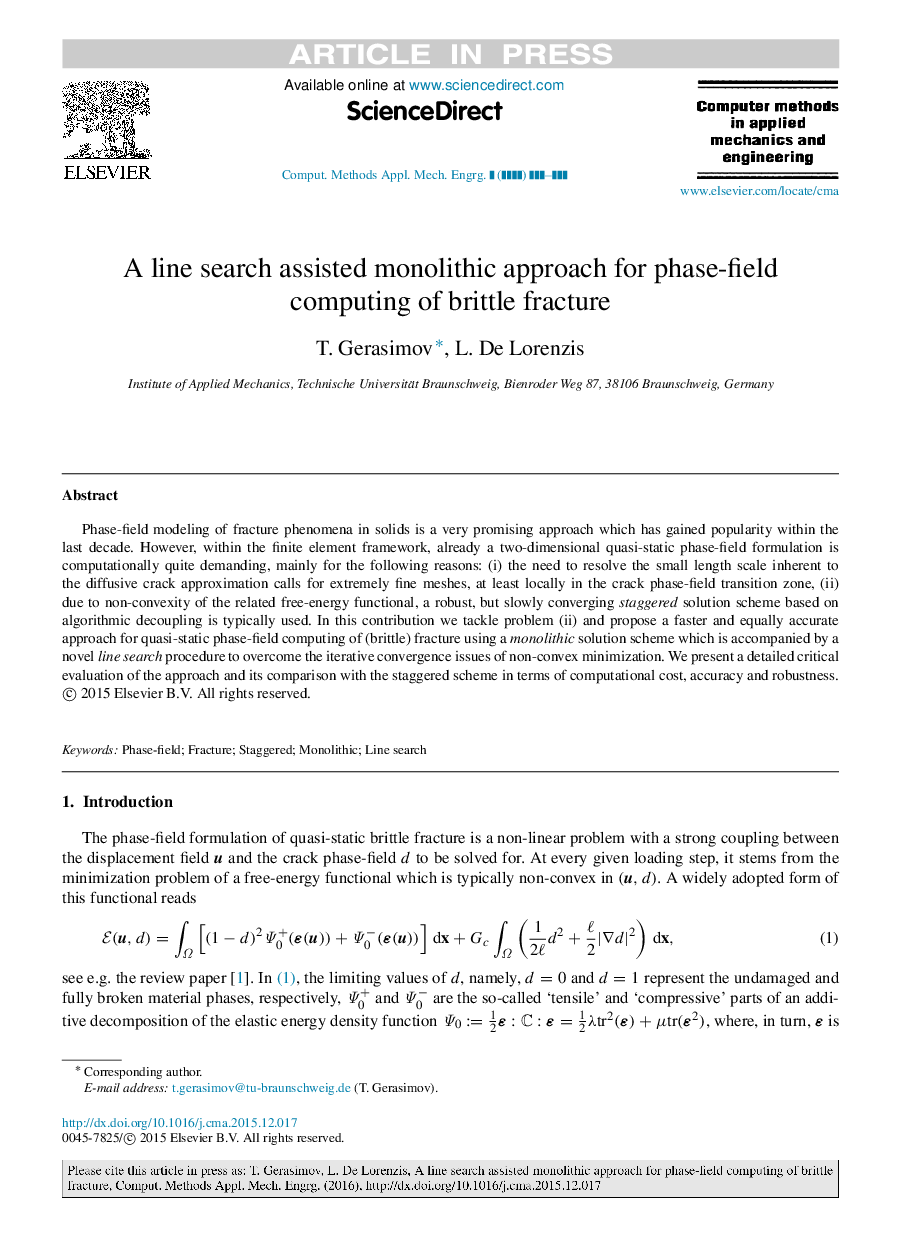| Article ID | Journal | Published Year | Pages | File Type |
|---|---|---|---|---|
| 4964038 | Computer Methods in Applied Mechanics and Engineering | 2016 | 28 Pages |
Abstract
Phase-field modeling of fracture phenomena in solids is a very promising approach which has gained popularity within the last decade. However, within the finite element framework, already a two-dimensional quasi-static phase-field formulation is computationally quite demanding, mainly for the following reasons: (i) the need to resolve the small length scale inherent to the diffusive crack approximation calls for extremely fine meshes, at least locally in the crack phase-field transition zone, (ii) due to non-convexity of the related free-energy functional, a robust, but slowly converging staggered solution scheme based on algorithmic decoupling is typically used. In this contribution we tackle problem (ii) and propose a faster and equally accurate approach for quasi-static phase-field computing of (brittle) fracture using a monolithic solution scheme which is accompanied by a novel line search procedure to overcome the iterative convergence issues of non-convex minimization. We present a detailed critical evaluation of the approach and its comparison with the staggered scheme in terms of computational cost, accuracy and robustness.
Related Topics
Physical Sciences and Engineering
Computer Science
Computer Science Applications
Authors
T. Gerasimov, L. De Lorenzis,
